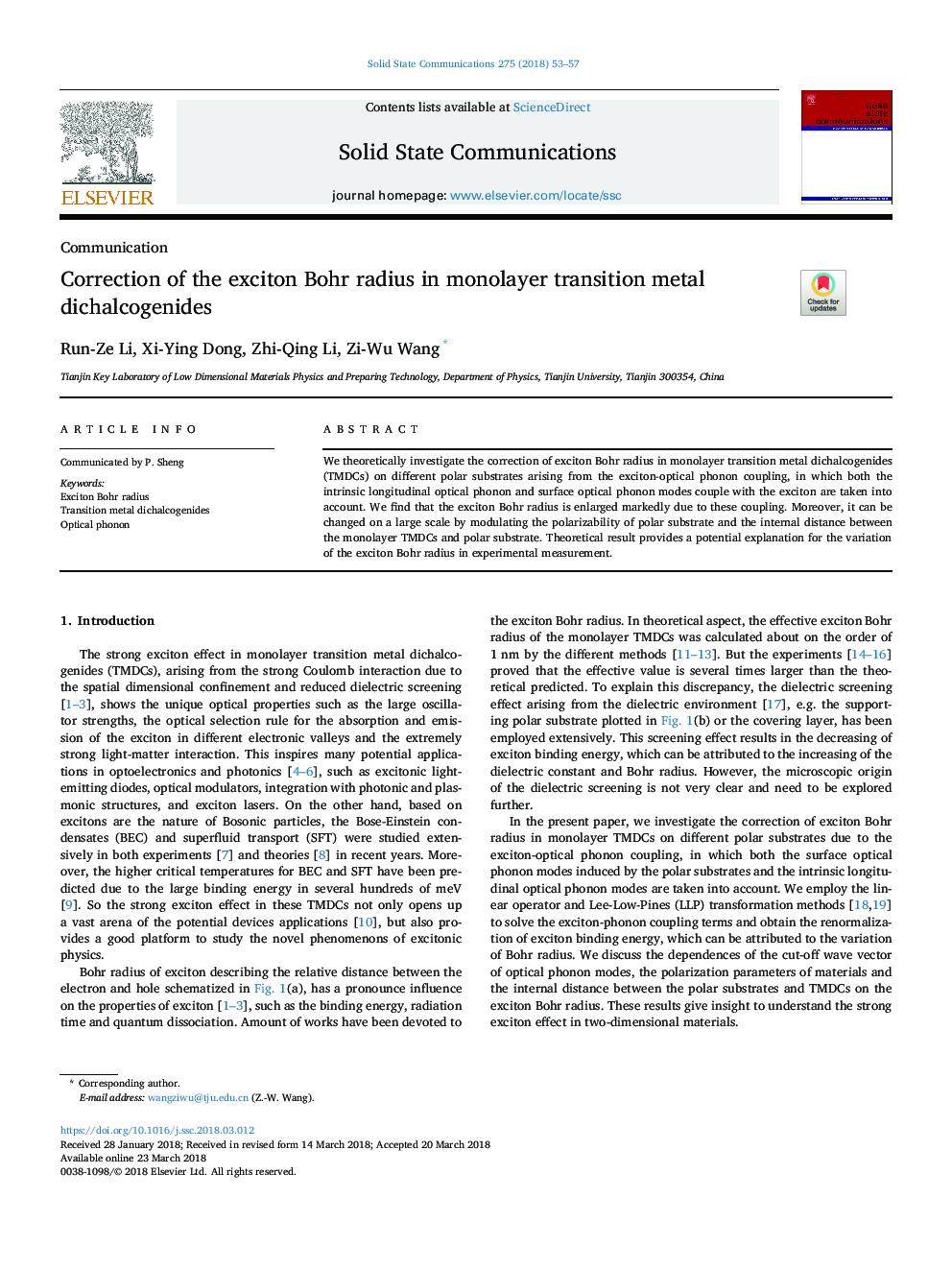| Article ID | Journal | Published Year | Pages | File Type |
|---|---|---|---|---|
| 7987855 | Solid State Communications | 2018 | 5 Pages |
Abstract
We theoretically investigate the correction of exciton Bohr radius in monolayer transition metal dichalcogenides (TMDCs) on different polar substrates arising from the exciton-optical phonon coupling, in which both the intrinsic longitudinal optical phonon and surface optical phonon modes couple with the exciton are taken into account. We find that the exciton Bohr radius is enlarged markedly due to these coupling. Moreover, it can be changed on a large scale by modulating the polarizability of polar substrate and the internal distance between the monolayer TMDCs and polar substrate. Theoretical result provides a potential explanation for the variation of the exciton Bohr radius in experimental measurement.
Related Topics
Physical Sciences and Engineering
Materials Science
Materials Science (General)
Authors
Run-Ze Li, Xi-Ying Dong, Zhi-Qing Li, Zi-Wu Wang,
